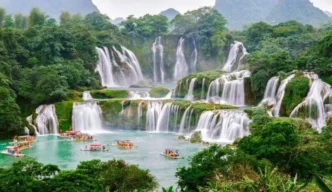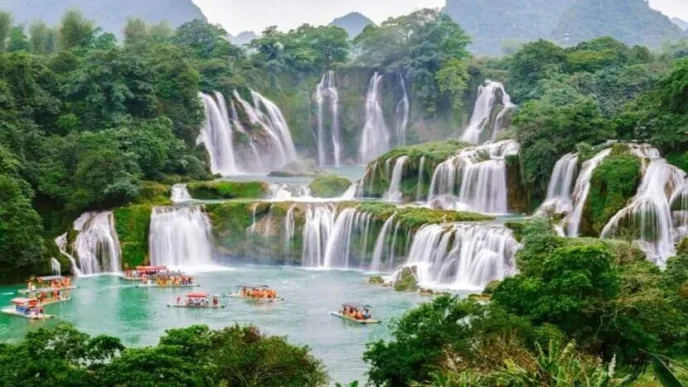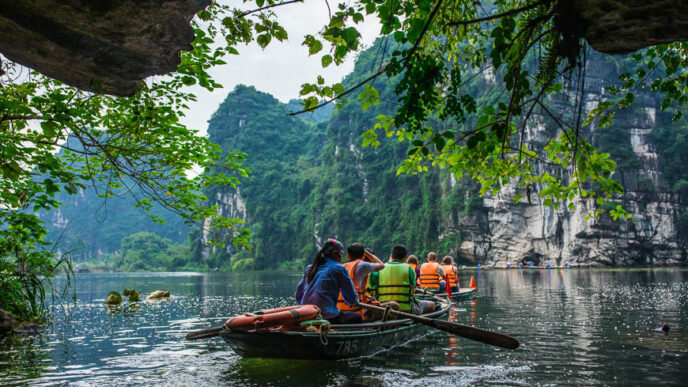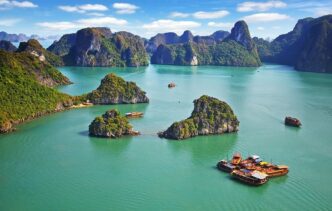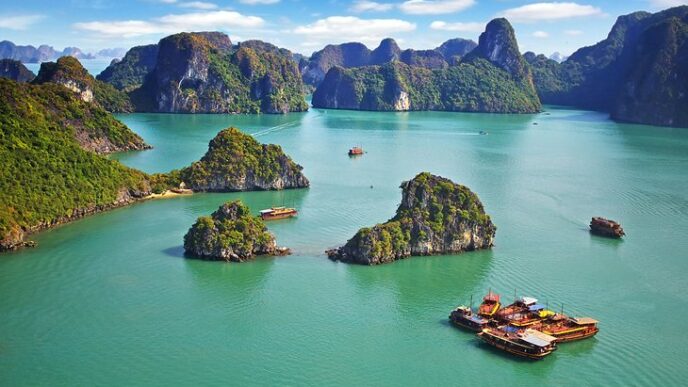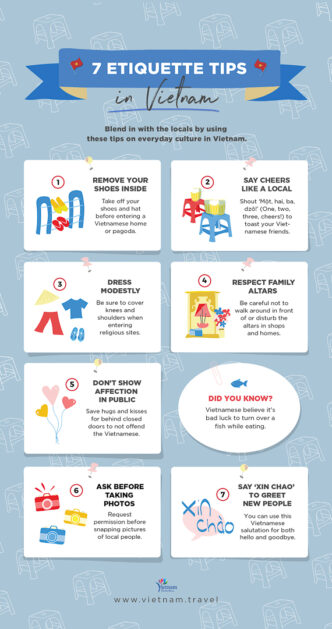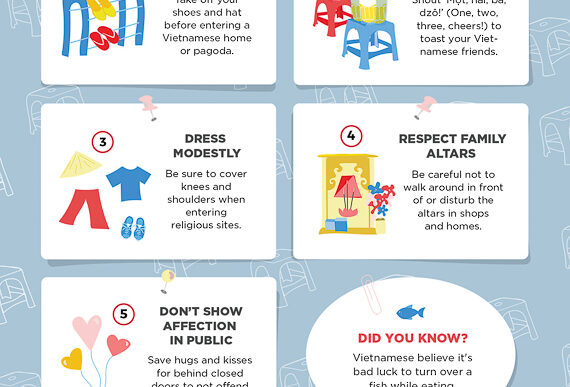Vietnam Weather Tips: A Comprehensive Guide for Travelers
Vietnam, known for its stunning landscapes, rich history, and vibrant culture, also boasts diverse weather conditions across the country. Whether you’re trekking through the lush hills of the North, lounging on the beaches in the South, or exploring bustling cities like Hanoi and Ho Chi Minh City, understanding the weather is essential for planning your trip.
In this article, we’ll guide you through the best times to visit Vietnam, the country’s unique weather patterns, and provide helpful tips on how to prepare for the climate in different regions.
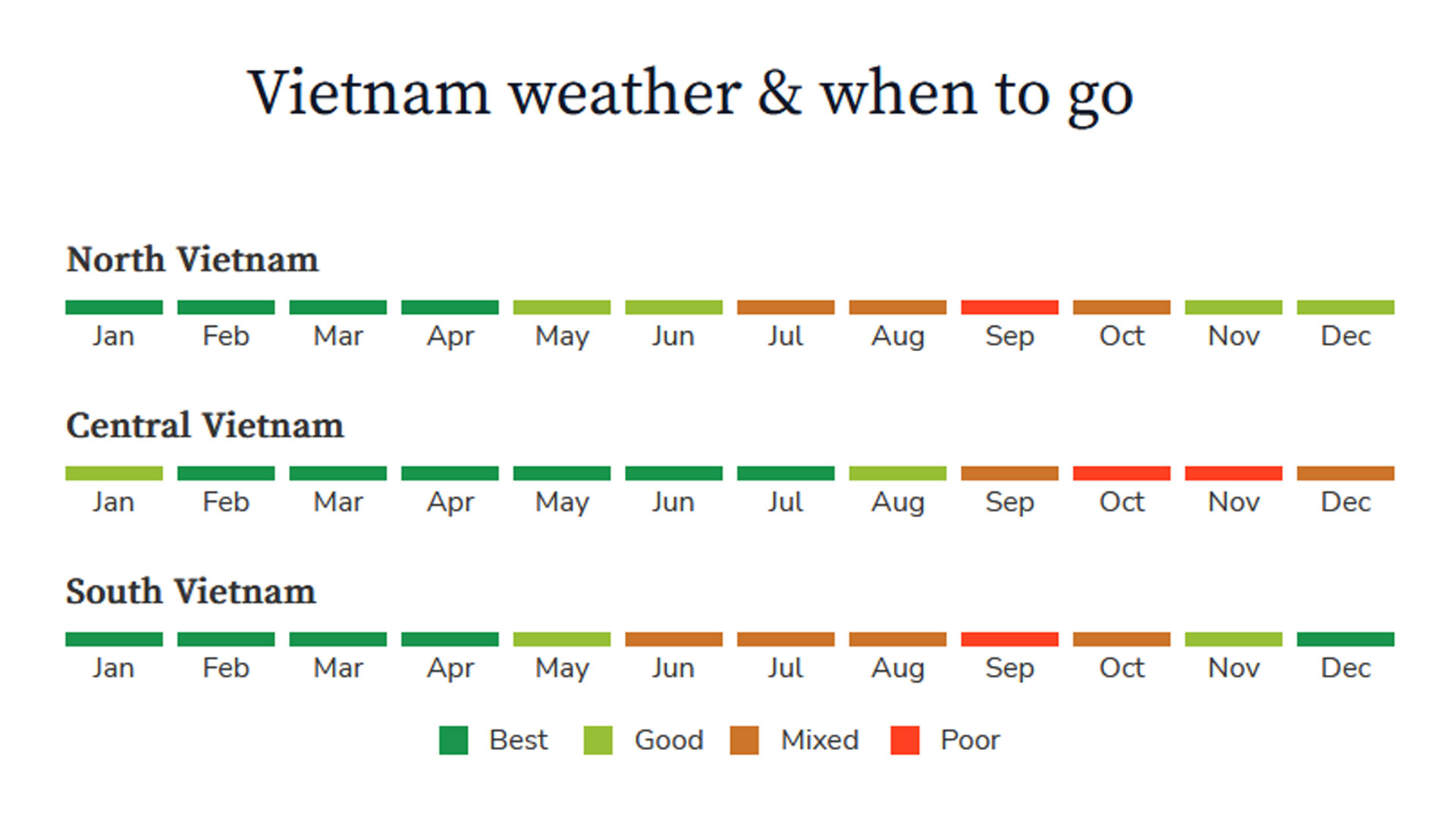
1. Understanding Vietnam’s Climate Zones
Vietnam’s geography spans more than 1,000 kilometers, which means the weather can vary greatly depending on the region. The country is divided into three distinct climate zones:
-
North Vietnam (Hanoi, Ha Long Bay, Sapa): The north experiences four distinct seasons: spring, summer, autumn, and winter. Winters can be cold and misty, while summers are hot and humid.
-
Central Vietnam (Hue, Da Nang, Hoi An): The central region has a tropical climate, with hot summers and mild winters. The wet season typically lasts from September to December, and the region is vulnerable to typhoons.
-
South Vietnam (Ho Chi Minh City, Phu Quoc): The southern region experiences a tropical climate year-round with two main seasons: the dry season from December to April and the rainy season from May to November.
Tip: The best time to visit depends on which region you plan to explore. Be sure to tailor your itinerary to suit the weather conditions.
2. Best Time to Visit Vietnam
The best time to visit Vietnam depends on the region and your travel preferences. Here’s a breakdown of the ideal travel periods for each region:
Northern Vietnam
-
Best Time: October to April – During this period, the weather in the north is cooler and more comfortable for sightseeing. It’s also the best time to visit destinations like Sapa for trekking and Ha Long Bay for cruises.
-
Winter (November to February): Temperatures can drop, and the weather is chilly, especially in the mountains. If you don’t mind cooler temperatures, this is a great time for exploring the capital city Hanoi.
Central Vietnam
-
Best Time: February to August – The weather is warm and dry, making it the perfect time to visit Hoi An and Da Nang. You can enjoy the beautiful beaches, explore the ancient town of Hoi An, and discover the Imperial City of Hue.
-
Avoid: September to November, as this period is the rainy season and the region is prone to typhoons.
Southern Vietnam
-
Best Time: December to April – The weather is dry and warm, ideal for visiting Ho Chi Minh City and Phu Quoc. The dry season also makes it the perfect time for outdoor activities like island hopping and exploring the Mekong Delta.
-
Rainy Season (May to November): Expect heavy rainfall, but this also means fewer tourists, which could give you a more peaceful experience.
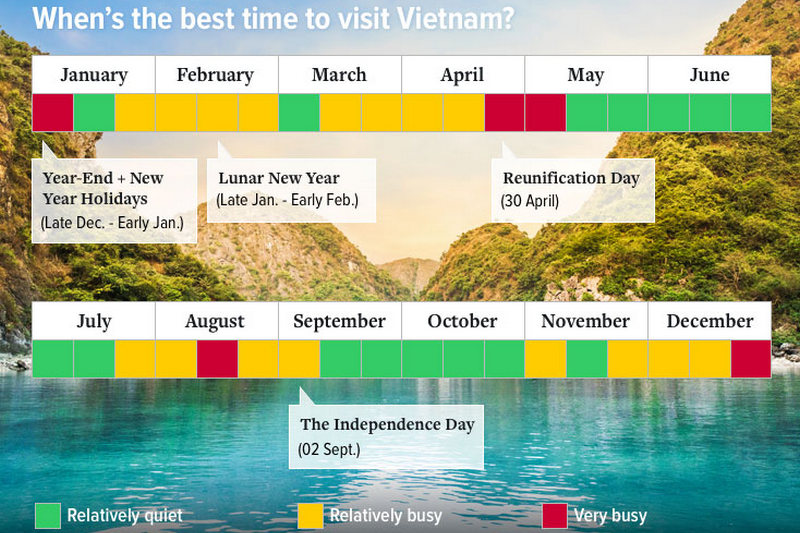
3. Monthly Breakdown of Vietnam’s Weather
To make planning your trip even easier, let’s take a look at the weather conditions in Vietnam by month:
January to March – Cool and Dry
-
North: Cool temperatures, perfect for sightseeing in Hanoi and hiking in Sapa.
-
Central: The weather is warm, with plenty of sunshine. Ideal for visiting the beaches of Da Nang.
-
South: The dry season continues, with warm weather and little rain.
April to June – Hot and Humid
-
North: Temperatures begin to rise, especially in Hanoi. It’s still a good time for hiking in the mountains.
-
Central: The temperature peaks, and it’s great for beach activities but watch out for occasional rain.
-
South: The rainy season starts in May, bringing afternoon showers but warm temperatures.
July to September – Rainy Season
-
North: Hot and humid, with some rain in the mountains and valleys.
-
Central: The rainy season hits, with the possibility of typhoons in August and September.
-
South: Heavy rains are frequent, but the temperatures remain consistent.
October to December – Cool and Dry
-
North: The weather cools, especially in Hanoi, making it a pleasant time for tourists.
-
Central: Rain tapers off, and the weather is suitable for sightseeing.
-
South: The dry season begins, perfect for outdoor activities.
4. Packing Tips for Vietnam’s Weather
Vietnam’s weather can change drastically depending on when and where you visit. Here’s a general packing guide to make sure you’re prepared for all conditions:
-
Light, breathable clothes: Cotton and linen are great choices for warm weather. Avoid heavy fabrics, especially in the southern and central regions.
-
A light jacket or sweater: Even in tropical regions, evenings can get cool, particularly in the northern mountainous areas.
-
Waterproof gear: If you’re visiting during the rainy season (May to November), pack a raincoat, umbrella, or waterproof shoes.
-
Sunscreen and hat: The sun can be strong, especially in the southern and central parts.
-
Comfortable shoes: You’ll be doing a lot of walking, so make sure you bring comfortable, durable shoes for sightseeing.
5. Dealing with the Humidity
Vietnam is known for its high humidity, particularly during the rainy season. The heat combined with humidity can make it feel hotter than the actual temperature. Here are a few tips to stay comfortable:
-
Drink plenty of water to stay hydrated.
-
Wear loose-fitting clothes to allow your skin to breathe.
-
Carry wet wipes or a small towel to freshen up during the day.
-
Use antiperspirant and keep a change of clothes handy for the warmer months.
6. Vietnam Weather and Local Festivals
Vietnam’s weather is also tied to its cultural festivals. If you want to experience the rich traditions of Vietnam, timing your visit with these events can be a highlight:
Tet (Lunar New Year)
-
When: Late January to February (depending on the lunar calendar).
-
What: Tet marks the most important festival in Vietnam, celebrated with fireworks, parades, and family gatherings. It’s the perfect opportunity to experience Vietnamese culture, but keep in mind that some places may be closed for a few days during the holiday.
Mid-Autumn Festival
-
When: September.
-
What: This festival is celebrated with lantern displays, dragon dances, and mooncakes. It’s a fun and vibrant time to visit Hanoi and Ho Chi Minh City.
Hue Festival
-
When: April or May (every two years).
-
What: Held in Hue, this cultural festival celebrates Vietnamese arts, music, and performance. The weather during this time is perfect for outdoor performances.
7. FAQs About Vietnam’s Weather
1. What’s the best month to visit Vietnam?
The best months to visit Vietnam are from December to April, during the dry season when the weather is pleasant throughout the country. However, the north and south have different peak seasons, so consider your itinerary before planning.
2. Does Vietnam have a monsoon season?
Yes, Vietnam experiences a monsoon season from May to October, especially in the central and southern regions. Expect heavy rains, particularly in Ho Chi Minh City and the Mekong Delta.
3. How hot does it get in Vietnam?
Temperatures in Vietnam can range from 20°C (68°F) in the winter to 35°C (95°F) or higher during the summer months, especially in the southern and central regions.
4. Is it safe to travel to Vietnam during the rainy season?
Yes, it’s generally safe to travel during the rainy season, but you may encounter heavy rains and humidity. Many areas remain open for tourists, and you’ll find fewer crowds during this time.
Conclusion
Understanding the weather in Vietnam is crucial for planning your trip and ensuring you have a comfortable and enjoyable experience. Whether you’re exploring the northern mountains, the central coastline, or the southern islands, Vietnam offers diverse climates and conditions to suit every traveler’s needs.
By keeping the best travel months, packing tips, and weather patterns in mind, you can ensure that your trip to Vietnam will be unforgettable. Don’t forget to check out the local festivals and cultural events, which add even more excitement to your journey!
Ready to explore Vietnam? Plan your trip around the ideal weather and discover the country’s stunning natural beauty, rich history, and vibrant culture!

